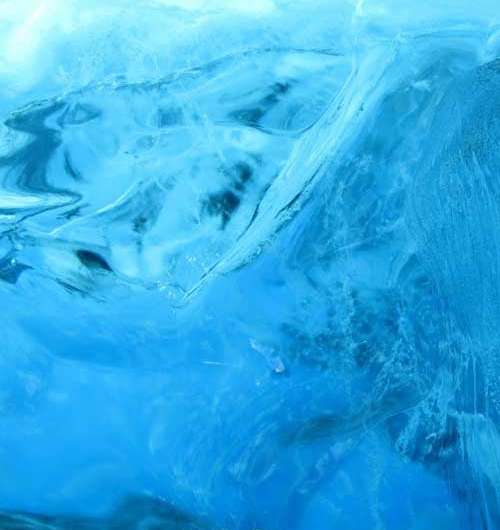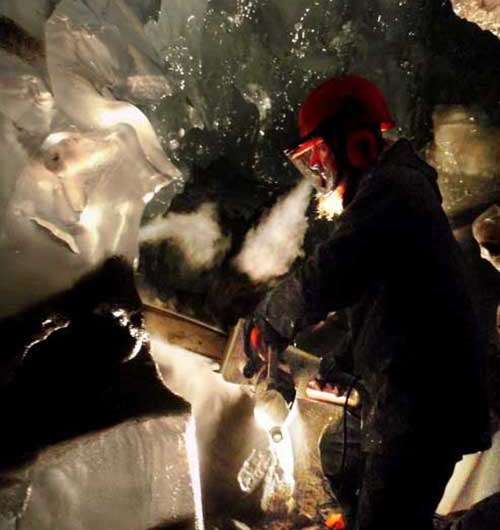Between a rock and a hard place: how life survives under a glacier

How does microbial life manage to survive in subglacial environments over millions of years? New research from the University of Bristol has found that the grinding of bedrock by glaciers and ice sheets produces a continual supply of hydrogen gas, a ready source of energy ('food') for many microbes. This hydrogen is most likely formed when the highly reactive surfaces of freshly fractured silicate minerals react with and split water.
Lead author, Dr Jon Telling of Bristol's School of Geographical Sciences said: "A wide diversity of microbes inhabit vast 'wetland' areas beneath ice sheets and many glaciers but life certainly isn't easy for them. They have to contend with cold temperatures, high pressures from overlying ice, dwindling food supplies as washed-in soils and vegetation are consumed, and constant crushing as rocks embedded in glacier beds are ground against bedrock or sediment."
However, when Dr Telling and colleagues investigated whether hydrogen produced during this grinding of rock could provide a continual source of energy to support subglacial life, they found that living in a 'rock crusher' has an unexpected advantage.
The researchers collected a range of silicate rocks representative of subglacial environments in Greenland, Canada, Norway and Antarctica and crushed them with a sledgehammer and ball mill to varying surface areas. Then, under an inert atmosphere in the laboratory, they added water and measured the production of hydrogen over time.
They found that hydrogen was produced at 0◦C in all the silicate-water experiments, probably through the reaction of water with mineral surface silica radicals formed during the reduction of the rocks to powder. Hydrogen production rose with increasing temperature or decreasing silicate rock grain size.

Dr Telling said: "By comparing how fast hydrogen is produced from rock crushing to previous measurements of hydrogen consumption under ice by microbes, we show that sufficient hydrogen is produced to support life.
"This provides a novel mechanism for sustaining life and biodiversity under ice both in the present day, and in past global glaciations ('Snowball Earth' events) when the Earth's continents may have been completely covered in ice for millions of years."
More information: J. Telling et al. Rock comminution as a source of hydrogen for subglacial ecosystems, Nature Geoscience (2015). DOI: 10.1038/ngeo2533
Journal information: Nature Geoscience
Provided by University of Bristol


















